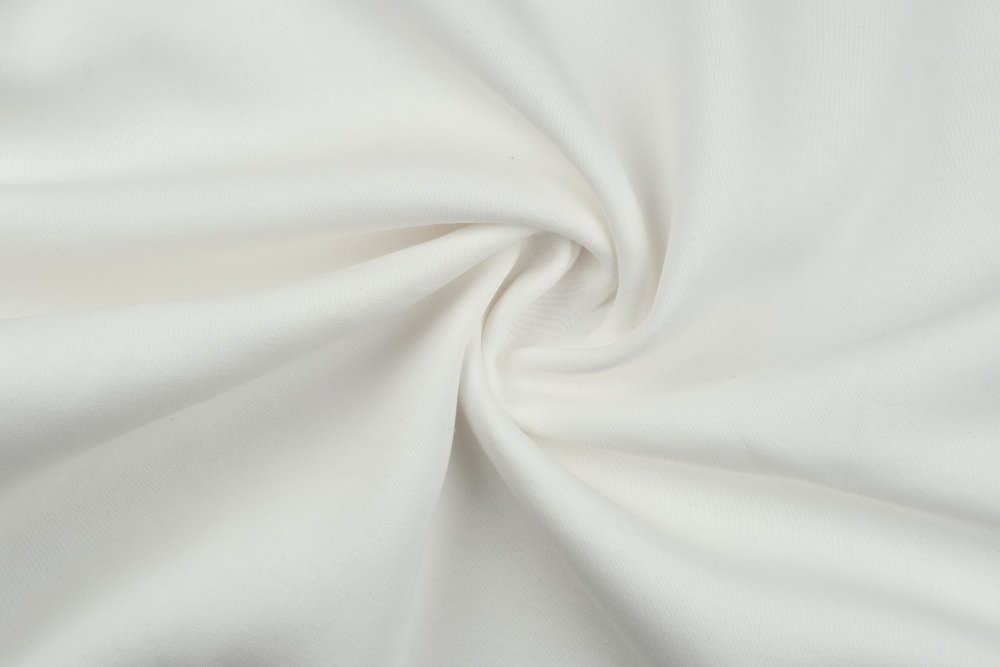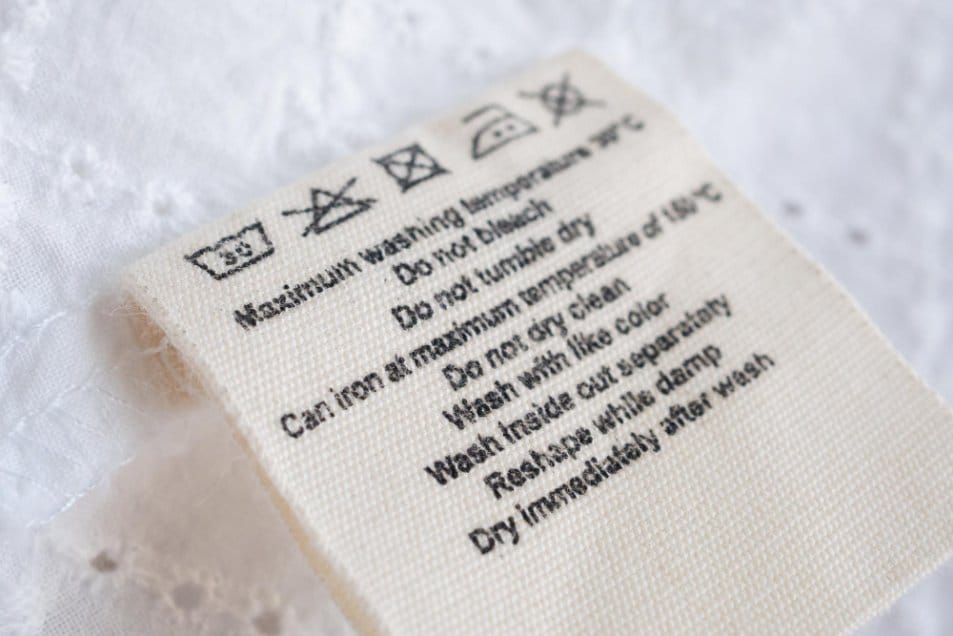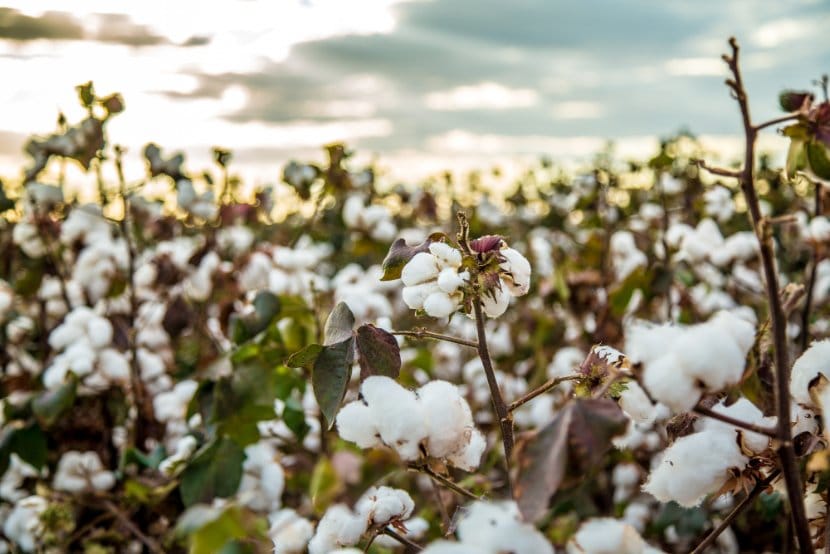Everything you need to know about this versatile, durable textile for your next sewing project
Table of Contents
What is Broadcloth Cotton?
Broadcloth cotton is a medium-weight, tightly woven fabric that has become a cornerstone material in both fashion and home textiles. Originally developed in medieval England as a wool fabric, modern broadcloth refers to a plain-weave cotton fabric known for its smooth texture, crisp appearance, and exceptional versatility.
The name “broadcloth” comes from its historical production on wide looms (broader than the standard 27-inch looms of the time). Today’s broadcloth maintains that tradition of quality while offering modern sewers and designers a reliable foundation for countless projects.
Is Broadcloth Natural or Synthetic?
Broadcloth can be both natural and synthetic, depending on its fiber content. Traditional broadcloth is 100% cotton (natural), but modern versions often include polyester blends. The most common blend is 65% polyester and 35% cotton, which combines cotton’s breathability with polyester’s durability and wrinkle resistance.
Key Characteristics and Properties

Weight and Feel
Is cotton broadcloth lightweight? Yes, broadcloth is considered a lightweight to medium-weight fabric, typically weighing between 3.5 to 4.5 ounces per square yard (110-140 GSM). This makes it perfect for shirts, dresses, and quilting projects where you need structure without bulk.
Breathability and Comfort
Is broadcloth breathable? Absolutely. Cotton broadcloth offers excellent breathability due to cotton’s natural fiber structure, which allows air circulation. This makes it comfortable for year-round wear, though it’s particularly suited for summer fabrics and warm weather applications.
Stretch and Drape
Does broadcloth stretch? No, traditional broadcloth has no stretch since it’s woven from non-stretch fibers. However, does broadcloth drape? Yes, it drapes beautifully due to its smooth weave and medium weight, creating clean lines in garments without being stiff.
Benefits of Wearing Broadcloth
- Excellent breathability for all-day comfort
- Smooth texture that feels soft against skin
- Professional appearance that resists wrinkling
- Durable construction withstands frequent washing
- Takes dyes beautifully for vibrant colors
- Affordable and widely available
- Suitable for sensitive skin
Considerations
- May shrink if not pre-treated properly
- Can wrinkle if 100% cotton
- No stretch for form-fitting garments
- May fade with frequent washing
- Requires ironing for crisp appearance
Types and Fabric Comparisons
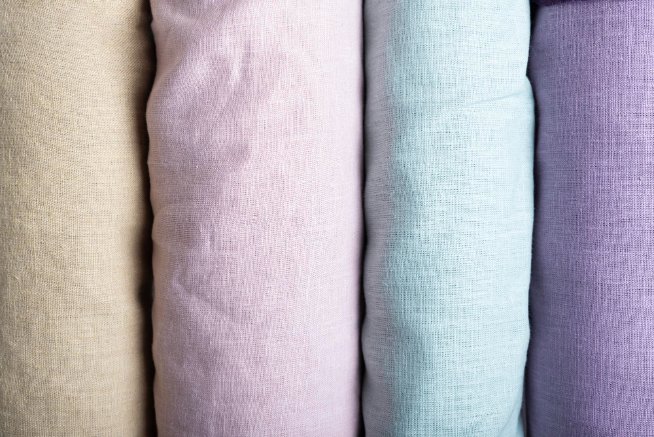
Cotton Broadcloth vs Other Cotton Fabrics
| Fabric Type | Weight | Weave | Best Uses | Key Differences |
|---|---|---|---|---|
| Broadcloth | Medium (3.5-4.5 oz) | Plain weave, fine ribs | Shirts, dresses, quilting | Smooth finish, professional look |
| Poplin | Light-Medium (3-4 oz) | Plain weave, crosswise ribs | Shirts, lightweight dresses | More pronounced ribbed texture |
| Chambray | Light-Medium (3-4 oz) | Plain weave, colored warp | Casual shirts, dresses | Denim-like appearance, softer feel |
| Twill | Medium-Heavy (4-6 oz) | Diagonal weave pattern | Pants, jackets, workwear | Diagonal pattern, more durable |
| Muslin | Light (2-3 oz) | Plain weave, loose | Test garments, backing | Looser weave, less refined |
What is Another Name for Broadcloth?
Broadcloth is also known as poplin in many parts of the world, particularly in the UK. The terms are often used interchangeably, though technically, poplin refers to the same type of fabric with a slightly more pronounced ribbed texture.
Is Muslin the Same as Broadcloth?
No, muslin and broadcloth are different fabrics. While both are cotton fabrics with plain weaves, muslin is much lighter weight with a looser weave, making it less refined and primarily used for test garments and backing materials.
Technical Specifications
Fabric Construction Details
- Thread Count: 144-180 threads per inch (TPI)
- Weight: 110-140 GSM (3.5-4.5 oz per square yard)
- Standard Width: 44-45 inches (sometimes 60 inches for home decor)
- Weave Structure: Plain weave with slight crosswise ribs
- Common Blends: 100% cotton, 65% polyester/35% cotton
- Shrinkage Rate: 3-5% for untreated cotton, <1% for poly-blends
How is Broadcloth Made?
Broadcloth production involves several key steps:
The mercerization process involves treating the cotton with caustic soda, which causes the fibers to swell and creates the characteristic smooth, lustrous finish that broadcloth is known for.
Expert Sewing Techniques for Broadcloth
Watch this comprehensive guide on professional broadcloth sewing techniques, from fabric preparation to seam finishes.
Applications and Uses
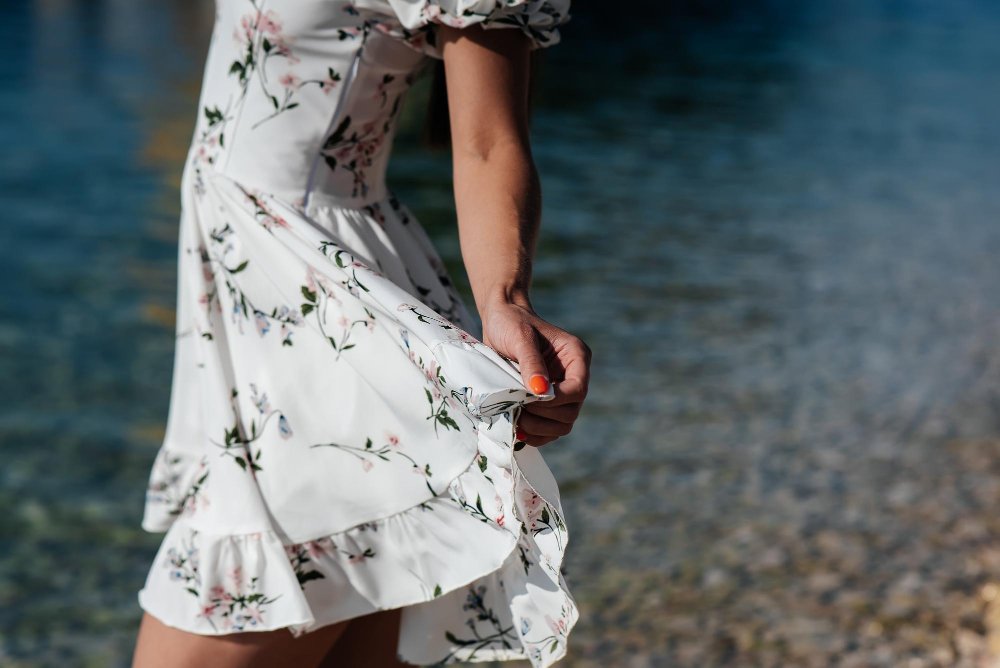
Apparel Applications
Is Cotton Broadcloth Good for Dresses?
Yes, cotton broadcloth is excellent for dresses. Its medium weight provides structure while remaining comfortable, and its smooth finish creates a polished appearance. It’s particularly good for shirt dresses, A-line dresses, and structured summer dresses.
Is Broadcloth Good for Pants?
While broadcloth can be used for lightweight pants and trousers, it’s not the ideal choice for fitted pants due to its lack of stretch. It works better for loose-fitting pants, pajama bottoms, or children’s clothing where comfort is prioritized over structure.
Hot Weather Suitability
Is broadcloth good for hot weather? Absolutely. Cotton broadcloth’s breathable nature and lightweight construction make it one of the best choices for hot weather clothing. The natural cotton fibers allow air circulation, helping to keep you cool and comfortable.
Home Decor and Crafting
- Quilting: Popular choice for quilt tops and backing
- Curtains: Lightweight panels for casual window treatments
- Pillow covers: Easy to sew and wash
- Table linens: Placemats and casual tablecloths
- Craft projects: Appliqué work and general crafting
Is Broadcloth a Good Lining Fabric?
Yes, broadcloth makes an excellent lining fabric, especially for jackets, bags, and purses. Its smooth texture prevents snagging, while its durability ensures the lining will last as long as the outer garment.
Sustainability and Environmental Impact
Organic Cotton Options
Many manufacturers now offer organic cotton broadcloth, which is grown without pesticides or synthetic fertilizers. These options provide the same quality and performance while supporting sustainable farming practices.
Sustainability Benefits
- Biodegradable: 100% cotton broadcloth naturally decomposes
- Durable: Long-lasting fabric reduces need for replacement
- Recyclable: Can be recycled into new textiles
- Low maintenance: Requires less frequent washing than some fabrics
Care and Maintenance
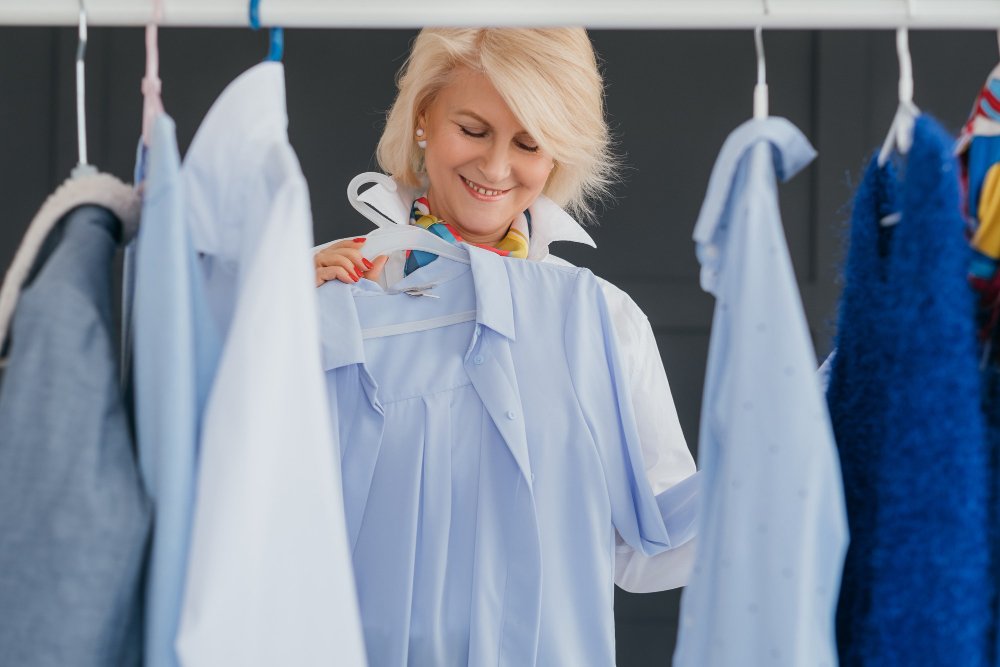
Does Broadcloth Shrink When Washed?
Yes, 100% cotton broadcloth will shrink 3-5% when first washed if not pre-shrunk. Polyester blends shrink much less (typically under 1%). Always pre-wash your fabric before cutting and sewing to avoid disappointment.
Does Broadcloth Wrinkle Easily?
Pure cotton broadcloth does wrinkle, but less than many other cotton fabrics due to its tight weave. Polyester blends are much more wrinkle-resistant and may not require ironing.
How to Soften Broadcloth
To soften broadcloth fabric:
- Wash in warm water with fabric softener
- Add 1/2 cup white vinegar to the rinse cycle
- Tumble dry with dryer balls
- Avoid over-drying, which can make fabric stiff
Step-by-Step Care Instructions
- Pre-wash: Always pre-wash fabric before cutting
- Sort colors: Wash similar colors together
- Water temperature: Cold to warm water (30-40°C)
- Detergent: Use mild detergent, avoid bleach
- Drying: Tumble dry low or line dry
- Ironing: Iron while slightly damp for best results
Buying Guide and Quality Assessment
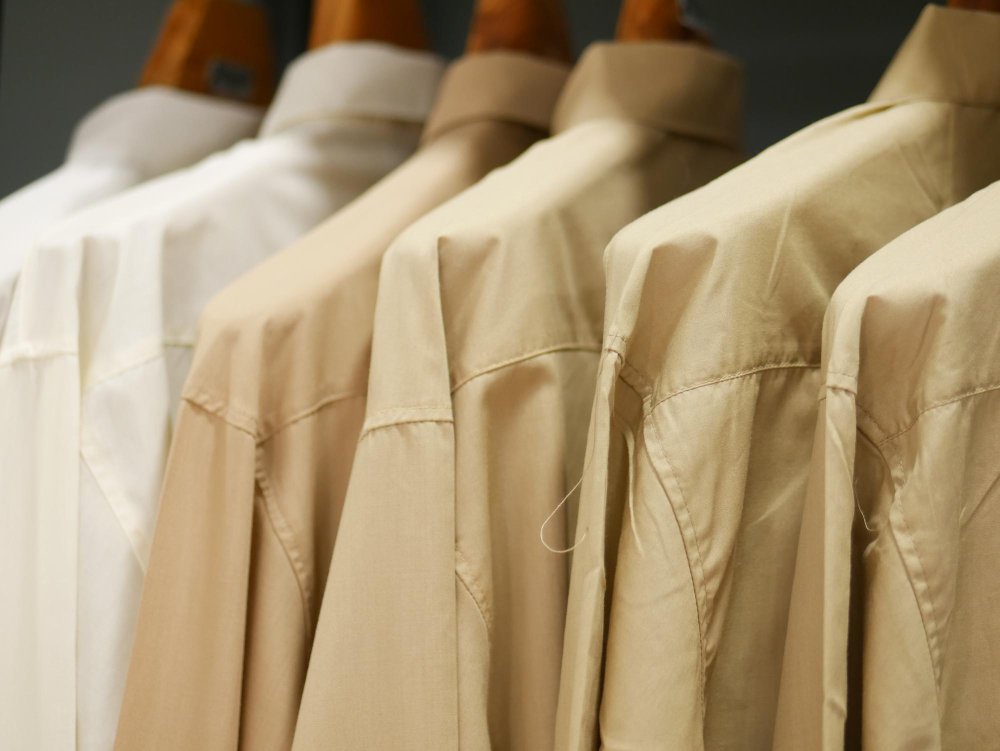
How to Identify Broadcloth
To identify quality broadcloth:
- Feel the texture: Should be smooth with slight crosswise ribs
- Check the weave: Tight, even plain weave structure
- Test the drape: Should hang smoothly without being limp
- Examine the finish: Should have a subtle luster from mercerization
- Check colorfastness: Quality broadcloth holds dye well
Is Broadcloth High Quality?
Broadcloth can be high quality, but this depends on the manufacturer and fiber content. Look for:
- Higher thread counts (160+ TPI)
- Even, consistent weave
- Proper mercerization
- Quality certifications (OEKO-TEX, etc.)
- Reputable brand names
Price vs. Quality Guide
| Quality Level | Price Range (per yard) | Key Features | Best For |
|---|---|---|---|
| Budget | $3-6 | Basic weave, lower thread count | Practice projects, casual wear |
| Mid-range | $6-12 | Good quality, consistent weave | Most sewing projects, gifts |
| Premium | $12-20+ | High thread count, superior finish | Professional garments, heirloom pieces |
Troubleshooting Common Issues
Does Broadcloth Fray?
Broadcloth has minimal fraying due to its tight weave, but raw edges should still be finished with techniques like bound seams or French seams for a professional finish.
Common Problems and Solutions
- Excessive wrinkling: Use polyester blend or add fabric softener
- Color bleeding: Pre-wash separately and use color-catcher sheets
- Stiffness after washing: Reduce detergent amount and add vinegar to rinse
- Uneven shrinkage: Always pre-wash and dry using same method as final garment
What is a Substitute for Broadcloth?
If broadcloth isn’t available, suitable substitutes include:
- Cotton poplin: Very similar properties, slightly different texture
- Cotton lawn: Lighter weight but similar drape
- Cotton batiste: Finer, more delicate option
- Cotton shirting: Similar weight and application
Frequently Asked Questions
Conclusion
Broadcloth cotton remains one of the most versatile and reliable fabrics available to home sewers and fashion designers alike. Its combination of durability, breathability, and professional appearance makes it an excellent choice for a wide range of projects, from crisp dress shirts to comfortable summer dresses and quality quilting projects.
The key to success with broadcloth lies in understanding its properties and choosing the right type for your specific needs. Whether you opt for 100% cotton for maximum breathability or a polyester blend for wrinkle resistance, proper care and handling will ensure your broadcloth projects look professional and last for years.
Key Takeaways and Recommendations
- For beginners: Start with a 65% polyester/35% cotton blend for easier care and wrinkle resistance
- For hot weather: Choose 100% cotton broadcloth for maximum breathability and comfort
- For professional garments: Invest in higher thread count (160+ TPI) broadcloth for superior quality
- For quilting: Stick with 100% cotton for best results and traditional feel
- For durability: Always pre-wash fabric and follow proper care instructions
- For sustainability: Look for organic cotton or OEKO-TEX certified options when possible
As you embark on your next sewing project, remember that broadcloth’s forgiving nature and consistent performance make it an ideal choice for both learning new techniques and creating polished finished pieces. With proper care and quality selection, broadcloth cotton will serve you well in countless creative endeavors.
Additional Resources
For more information about cotton fabrics and textile care, visit these authoritative sources:

